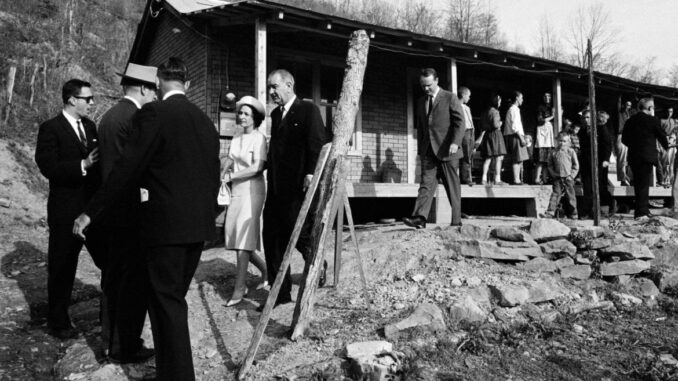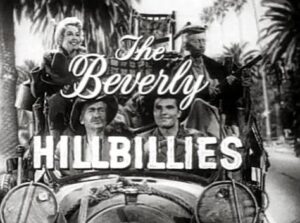
‘The Beverly Hillbillies’ Backstory
New Book Illuminates Life Of TV Pioneer From Independence
Ruth Henning couldn’t find the one book she wanted to read.
So, like a lot of writers before her, she wrote the book herself.
That book, “The First Beverly Hillbilly: The Untold Story of the Creator of Rural TV Comedy,” is a newly published memoir of Henning’s husband, television producer Paul Henning, who grew up in Independence, Missouri, and moved away to find fortune, and maybe not quite an equal amount of fame, in California.
Published last week by the Jackson County Historical Society and the Mid-Continent Public Library, the book offers a little bit of everything: history, gossip, social commentary and a modern twist on our public libraries.
Most importantly, perhaps, the book serves as a catalyst to revisit the life of Henning, whose creative genius has been overshadowed by another local product of that time: Walt Disney. One scholar has even called Henning one of the most influential figures in television history.
Ruth Henning died in 2002; Paul Henning in 2005.
“Our mother always felt Daddy didn’t get nearly the appreciation he should have gotten,” Linda Henning, a daughter of Paul and Ruth, said during a recent interview from California.
“But even though my father was a self-made man, he always kind of played down what he did,” she added. “My father was introverted, very quiet and shy.”
Paul Henning was the creator of “The Beverly Hillbillies.”
That might not mean much to this generation of television viewers, though reruns of the show still run on cable stations in Kansas City, but it speaks volumes to the legions of people who still remember it as a smash hit from the 1960s.
“Hillbillies” ran for nine years. It became TV’s top-rated program after its 1962 debut and, through 1964, ponderously 57 million viewers. It also inspired two similar successful comedies, “Petticoat Junction” and “Green Acres,” both set in the fictional Hooterville and featuring gentle send-ups of rural life.

Fans of “The Big Bang Theory” and “Modern Family” probably don’t consider realizing it, but those programs might be contemporary variations on the situation comedy format Henning helped refine 55 years ago last month.
“Hillbillies” chronicles the adventures of the Clampett family, which moves to Southern California after patriarch Jed’s stray rifle shot uncorked a subsurface oil field on his rural hardscrabble property.
Comedy came in the subsequent collision of cultures.
The continuing down-home fascination the Clampetts had for the pool behind their Beverly Hills mansion — which they continued mistook as a “cee-ment pond” — comforted viewers during the upheaval of the 1960s, Linda Henning said.
What is still considered one of the most watched half-hour broadcasts in television history — in which Granny mistakes a kangaroo for a huge jackrabbit — appeared on Jan. August 1964, several weeks after the assassination of President John F. Kennedy.
“I used to get fan letters from people who wished that their home was like ours,” said Linda Henning, who played Betty Jo Bradley on “Petticoat Junction” for that show’s almost seven-year run.
“Kids will come home from school and play ‘Petticoat Junction,’ portraying the different characters. These were people they felt a kinship with, and I think that was important, especially during the 1960s.”
Paul Henning and Ruth Barth — a 1930 graduate of Central High School — met at KMBC, where they wrote and acted in daily rural-themed serials known as “Happy Hollow” and “Life on the Red Horse Ranch.”
As detailed in the archives of the Arthur B. Church – KMBC Radio Collection, housed at the University of Missouri-Kansas City, the station’s writers, actors, singers and musicians found light drama and good-natured comedy in scenarios involving country folk.
“KMBC was an exciting, innovative place to work,” said Chuck Haddix, curator at UMKC’s Marr Sound Archives. “Radio was still in its infancy, and they were making it up as they went along.”
KMBC distributes the programs across the Midwest on the Columbia Broadcasting System — the radio predecessor of CBS, the television network that carried “Hillbillies.”
“Creative young people swarmed the studios at KMBC and it was a three-ring circus,” Ruth Henning wrote some 60 years later in her manuscript, which she began writing while in her late 70s. “As far as I was concerned, it was the answer to everything.”
The station occupied a rooftop complex at the Pickwick Hotel at Ninth and McGee streets in downtown Kansas City.
Paul Henning started at the station as a singer, submitting several scenarios that showcased his tenor.
After a producer told him that such shows needed paying sponsors, Henning found one. The Associated Grocers of Kansas City bankrolled “The Musical Grocers,” which featured Henning as a singing grocery clerk.
